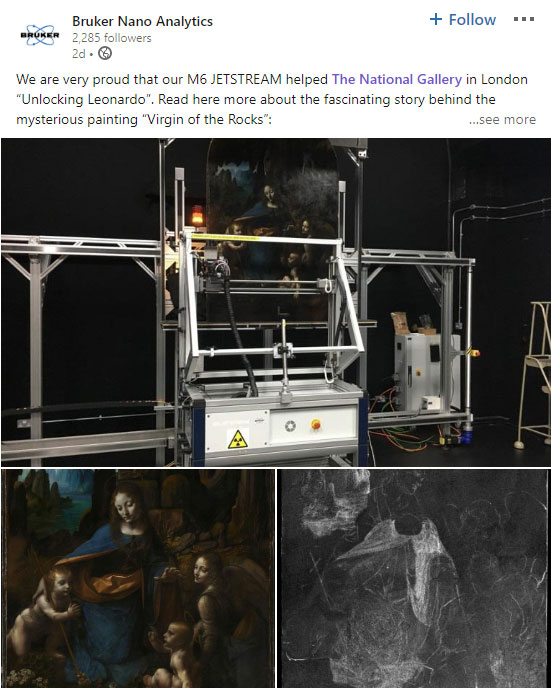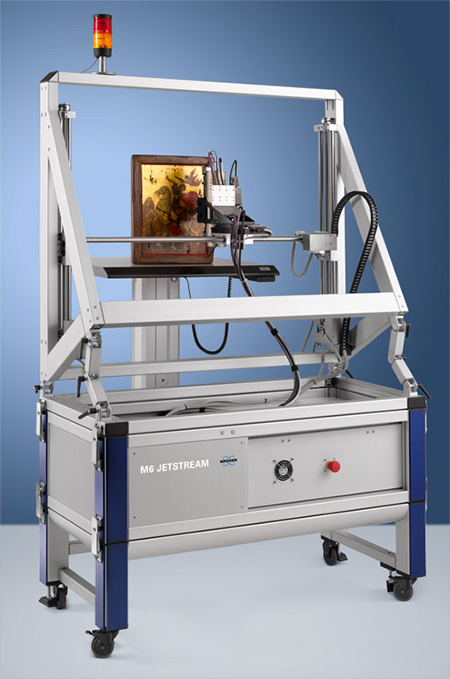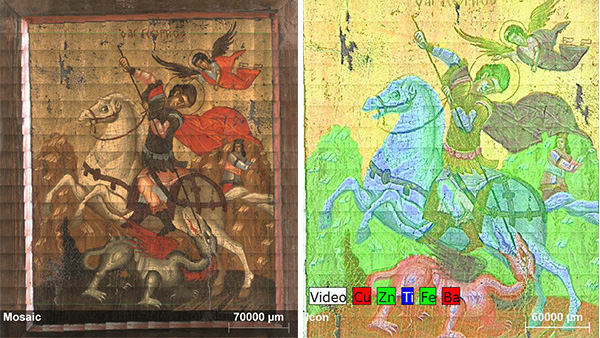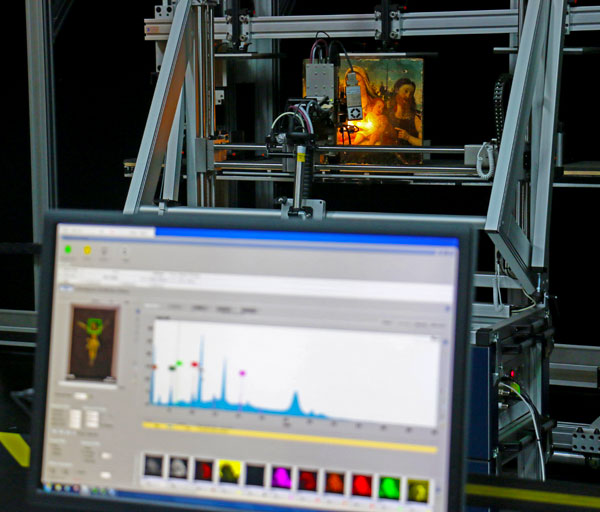Analysing Historic Paintings with Micro-XRF
The National Gallery in London used micro-XRF to reveal a hidden sketch on a Leonardo da Vinci painting, which is the focus of their current exhibition. Micro-XRF is a non-destructive technique for mapping elements and analysing layers.
Blue Scientific is the official distributor of Bruker Micro-XRF instruments in the UK and Nordics (Norway, Sweden, Denmark, Finland, Iceland). For more information or quotes, please get in touch.
Bruker M6 JETSTREAM
More articles about Micro-XRF
Contact us on +44 (0)1223 422 269 or info@blue-scientific.com
Follow @blue_scientificMicro-XRF at The National Gallery
The National Gallery in London used the Bruker M6 JETSTREAM to help reveal the secrets of Leonardo da Vinci’s painting “The Virgin on the Rocks”.

The painting is the focus of The National Gallery’s exhibition “Leonardo: Experience a Masterpiece”.
Researchers discovered completely different underdrawing under the layers of paint. This suggests that Leonardo sketched out one composition, then changed it to another for the final painting.
Macro-XRF was used to map elements on the painting. The materials used for the hidden drawing contained zinc, so the zinc map revealed the hidden lines. Macro-XRF is non-destructive, so it’s ideal for analysing valuable, historic paintings without damaging them.
The exhibition is on at The National Gallery until 26th January 2020. Details here…
Here’s a quick 30 second introduction from the gallery about the fascinating secrets of the painting:

Bruker M6 JETSTREAM
- Large area micro-XRF
- Map elements to reveal hidden layers, alterations and analyse pigments
- Non-destructive technique
- Convenient, mobile rig for in-situ scanning
- Tilt the rig to scan horizontally or vertically
Analysing Paintings with Micro-XRF
As a non-destructive technique, micro-XRF is ideal for studying paintings, artwork and historical artefacts. By measuring elements and mapping their distribution, you can acquire valuable information about:
- Authenticity of paintings
- Hidden layers
- Alterations, contamination and previous restoration
- Pigments used in the paint and materials
- Information for restoration and conservation
Watch videos of the talks from our Micro-XRF in Art Conservation Workshop to find out more about how micro-XRF works, and how it’s used at The Fitzwilliam Museum in Cambridge to analyse manuscripts and paintings.

More Information
Blue Scientific is the official distributor of Bruker Micro-XRF in the UK and Nordic region. We’re here to provide quotes and answer all your questions – just get in touch.
We’ll also be at the BAPCR (British Association of Paintings Conservator-Restorers) conference “Tales of the Unexpected” in January 2020 – come and see us if you’re attending! Details about the conference here…
Contact us on +44 (0)1223 422 269 or info@blue-scientific.com
Bruker M6 JETSTREAM
More articles about Micro-XRF



